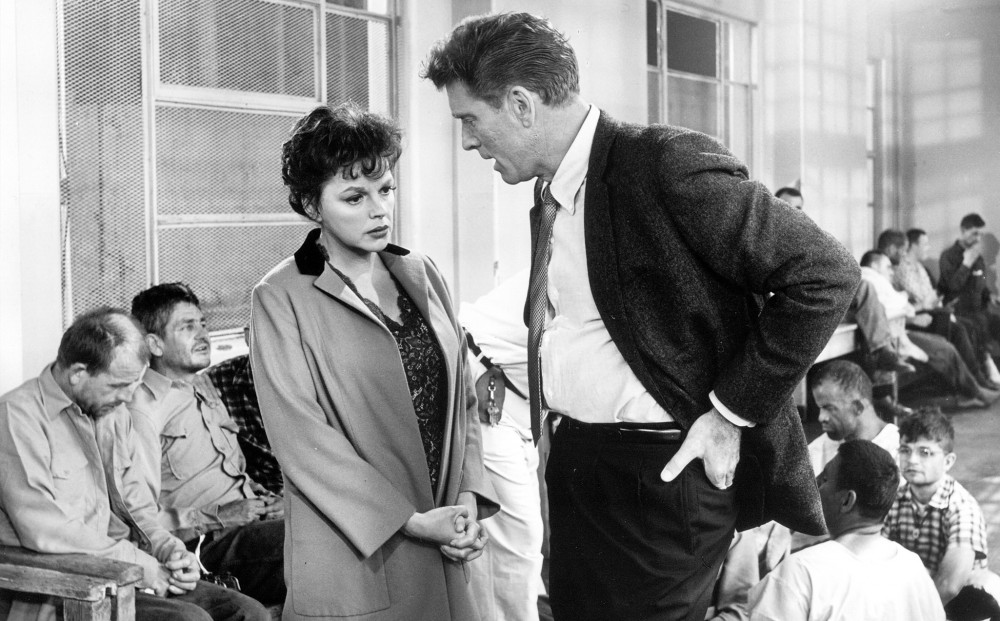
John Cassavetes’ third feature film, A Child Is Waiting (1963), opens with one of the most heartbreaking scenes in American cinema. Ted Widdicombe (Steven Hill) has just brought his son Reuben (Bruce Ritchey) to Crawthorne State Mental Hospital. Ted is tense, angry, and filled with guilt. Dr. Matthew Clark (Burt Lancaster) entices Reuben to leave the back seat of his father’s car with a toy race car Reuben can ride in. Cautiously Reuben exits his father’s car and joins Dr. Clark in playing with this toy. As soon as Reuben’s back is turned his father speeds off. Reuben becomes hysterical, screaming for his father and his mother (Gena Rowlands) while Dr. Clark restrains him.
This single sequence is the entirety of A Child Is Waiting in microcosm. Children with developmental disorders are deposited at the hospital, committed and often abandoned for life. There are few exceptions but for the most part it is clear that a divide exists between these two parties. The tragedy for Cassavetes is that these kids, and the adults that they will one day be, have as rich and as valid an emotional life as anyone. John Cassavetes intended this film to stand as a defiant symbol of the emotional needs of these children; his film was to be their advocate.
Abby Mann’s screenplay focuses on Jean Hansen (Judy Garland), a music teacher and newcomer to the staff of Crawthorne State Mental Hospital. Her maternal bond to Reuben forms the controversial core of the film that, as written, is a kind of a parable about giving false hope to the hopeless. Producer Stanley Kramer and Abby Mann had worked together previously on Judgment At Nuremberg (1961) to great acclaim. What they didn’t gamble on was that the director of Too Late Blues (1961) would be a stubborn, passionate little maniac that wouldn’t settle for anything other than his way.
Cassavetes used real kids in the film; totally unafraid to show the reality of developmental disorders. His camera captured lovingly their incredibly emotive faces, imbuing A Child Is Waiting with all of their sweet natured innocence. He planned to juxtapose these close-ups of the children with the wider shots of the adults; his big name stars. Lancaster and Garland, in a visual sense, would be playing second fiddle to the children.
Kramer was outraged about Cassavetes’ creative decision and began to re-cut A Child Is Waiting behind the director’s back. Kramer even went so far as to blow-up wider shots to create close-ups of his stars. Legend has it that when Cassavetes heard what Kramer was doing, on that fateful Thanksgiving day, he drove over to United Artists and socked the producer right in the nose. Cassavetes would disown A Child Is Waiting and wouldn’t direct another feature until Faces (1968), which he self financed with his acting jobs (a practice that would become standard for the artist).
A Child Is Waiting is neither a true Cassavetes’ picture nor a film by Stanley Kramer. It’s a schizoid hybrid of styles and intents. Nevertheless A Child Is Waiting is an emotionally powerful and moving cinematic experience. What Cassavetes put on film is so potent that no tinkering could ever diffuse its affective abilities.
Besides launching Cassavetes on the path to becoming the greatest independent filmmaker of the twentieth century, A Child Is Waiting is also the last leading dramatic role that Judy Garland would ever have. She is magnificent in this film; a well of deep, tragic emotion. Lancaster’s stoic authority figure with a heart of gold is a perfect foil for Garland where each performer seems to bring out the best in the other. This is even more remarkable when one considers the problems faced on set with regards to Garland’s drug addiction.
A Child Is Waiting isn’t John Cassavetes’ best movie, but it’s certainly a fascinating example of his style working within the studio system. Even is it isn’t one of Cassavetes’ personal best as a director, it is still one of the best American movies of the early sixties. I’ve seen this movie more times than I can remember and it has never felt stale or lost any of its power.
